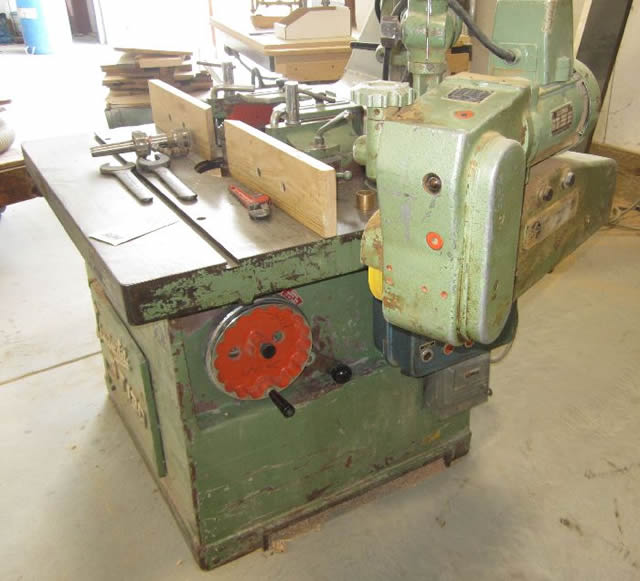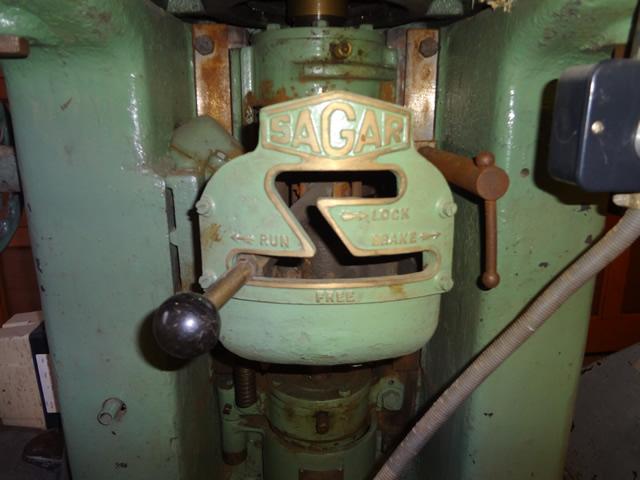Woodworking is an art that spans generations, and the machines that have powered this craft hold a significant place in its history. Among the most cherished possessions of woodworking enthusiasts are old woodworking machinery, embodying craftsmanship and innovation from bygone eras. The Old Woodworking Machinery (OWWM) community stands as a testament to the passion for restoring, preserving, and utilizing these vintage tools.
In this comprehensive guide, we’ll delve into the realm of OWWM, exploring the allure of antique woodworking machinery and the art of their restoration.
What Is Old Woodworking Machinery (OWWM)?
Trace the evolution of woodworking machines from the late 19th to the mid-20th century, highlighting key innovations and their impact on the industry.
Types of Old Woodworking Machinery

Planers and Jointers
Antique planers and jointers hold a significant place in woodworking history due to their precision and craftsmanship. Planers were crucial for smoothing and resizing lumber, while jointers helped in creating flat surfaces and precise edges. These machines were initially hand-powered, later evolving into motor-driven models.
The craftsmanship associated with these tools lies in their meticulous construction and precision mechanisms. Vintage planers and jointers often boast cast iron frames, hand-tooled components, and intricate adjustments that reflect the dedication to quality in their design.
Table Saws and Band Saws
The evolution of table saws and band saws showcases the technological advancements in woodworking. Table saws transitioned from early hand-cranked versions to motor-driven models with adjustable blades and fences. Band saws, with their continuous loop blades, revolutionized curved cutting and intricate designs in woodworking.
In addition, the design diversity of these saws reflects changing woodworking needs. Modern table saws include features like riving knives and advanced safety mechanisms, while band saws offer versatility in cutting materials of various thicknesses and shapes.
Drill Presses and Lathes
Vintage drill presses and lathes were pivotal in precision woodworking. Drill presses evolved from hand-cranked to motorized versions, offering accurate drilling angles and depths. Lathes, enabling the shaping of wood, evolved from foot-powered to motor-driven, enhancing precision and efficiency.
These machines played vital roles in creating intricate designs and precise cuts, showcasing the craftsmanship required for detailed woodworking. The construction of these tools often involved sturdy cast iron bases and adjustable components, emphasizing durability and accuracy.
The Art of Restoration
Assessment and Identification
Assessing old woodworking machinery involves a thorough inspection of structural integrity, identifying worn-out parts, checking for rust or corrosion, and evaluating electrical components. Through detailed observation and examination, restoration enthusiasts can create a comprehensive plan to bring the machinery back to its original functionality.
Restoration Techniques
Restoration of antique machinery requires a methodical approach, including disassembly, cleaning, rust removal using appropriate solvents or techniques like electrolysis, careful reassembly, lubrication, and refurbishing of worn parts. It involves using traditional methods alongside modern tools and materials to maintain authenticity while ensuring functionality.
Safety and Preservation
Preserving the authenticity and functionality of restored machinery involves adhering to safety protocols. This includes wearing appropriate safety gear, following manufacturer’s guidelines for operation, and implementing safety modifications without compromising the machine’s historical accuracy. Preservation techniques like applying protective coatings also help prevent rust and deterioration.
OWWM Community and Resources
Online Communities
Online forums, social media groups, and dedicated websites play a crucial role in fostering a vibrant community of OWWM enthusiasts. They serve as platforms for sharing restoration experiences, seeking advice, and celebrating the passion for vintage woodworking machinery.
Restoration Workshops and Events
Workshops, meet-ups, and events provide invaluable opportunities for enthusiasts to exchange knowledge, showcase restored machines, and learn new restoration techniques firsthand. These gatherings foster a sense of camaraderie and skill enhancement within the OWWM community.
Resources and Tools
A comprehensive list of resources including books, manuals, specialized tools, and suppliers helps enthusiasts access essential information and acquire necessary equipment for successful restoration projects. These resources aid in understanding the historical context, techniques, and intricacies of OWWM.
Owning and Using Old Woodworking Machinery

Maintenance and Care
Maintenance tips involve regular lubrication, cleaning, and periodic inspection to ensure restored machinery’s optimal performance and longevity. It includes storing machines in controlled environments to prevent deterioration and addressing minor issues promptly to avoid extensive damage.
Integrating Antique Machinery
Integrating old woodworking machinery into modern workshops requires careful consideration of space, safety measures, and workflow efficiency. It involves creating designated areas, retrofitting safety features, and adapting workflows to maximize the utility of vintage machines without compromising safety or productivity.
Legal and Safety Considerations
Owning and operating vintage machinery involves understanding legal regulations related to safety standards, electrical compliance, and insurance requirements. Adhering to safety standards ensures a safe working environment and compliance with legal obligations associated with operating historical machinery.
Conclusion
OWWM represents more than just a hobby; it’s a celebration of craftsmanship, innovation, and history. The journey of acquiring, restoring, and using old woodworking machinery is a labor of love that connects enthusiasts across time. Embracing these vintage tools not only preserves the past but also enriches the present woodworking experience, adding a touch of nostalgia and authenticity to the craft.
In conclusion, the ultimate guide to OWWM unveils the beauty and significance of antique woodworking machinery while emphasizing the art of restoration and the vibrant community that keeps this tradition alive.
